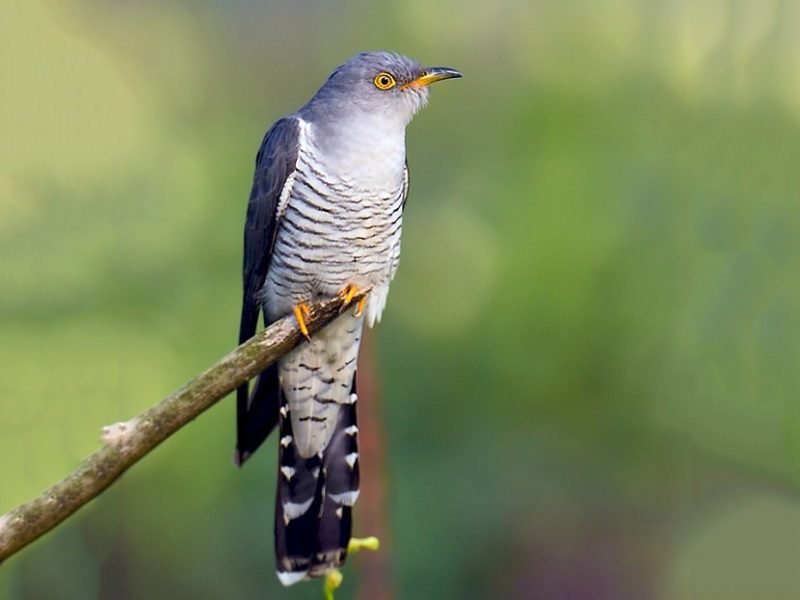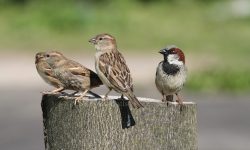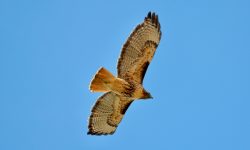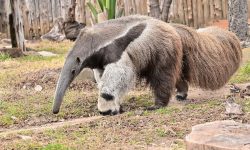Few birds have names as evocative and instantly recognizable as the cuckoo. The moment we hear the word, many of us imagine an echoing forest call or a tiny bird popping out of a wooden clock. But where did this strange, rhythmic name come from? And why does it apply to such a wide family of birds, including some that sound nothing like “cuckoo” at all?
This article traces the linguistic roots, cultural significance, and vocal heritage of one of nature’s most iconic names—“cuckoo.”

The Bird That Named Itself
A Name Born from Sound
The name “cuckoo” is a classic example of onomatopoeia—a word that imitates the natural sound associated with its subject. In this case, it mimics the two-note call of the Common Cuckoo (Cuculus canorus), a bird native to Europe and Asia.
In spring, the male Common Cuckoo lets out its familiar song:
“cu-coo… cu-coo…”
So distinct is this call that it has echoed through European forests for centuries, acting as both a harbinger of spring and a territorial announcement. Early people didn’t need a field guide to identify it—the bird practically said its own name.
A Universal Sound Across Languages
Remarkably, many languages across Europe and Asia have similar names for the bird, all rooted in imitation of the same call:
French: coucou
German: Kuckuck
Spanish: cuco
Italian: cucù
Old English: cucu (as early as the 13th century)
This linguistic convergence underscores how distinct and recognizable the cuckoo’s voice truly is. Across cultures, people heard the same song—and gave it the same name.
Not All Cuckoos Say “Cuckoo”
A Family Beyond the Voice
The cuckoo family (Cuculidae) includes over 140 species worldwide, ranging from the metallic Shining Bronze-Cuckoo of Australasia to the large, croaking Channel-billed Cuckoo and the subtle Mangrove Cuckoo of the Americas.
Surprisingly, most of these species don’t sound like “cuckoo” at all. Their calls include trills, whistles, hisses, and chatters—some musical, some haunting, and some barely audible.
So why are they still called cuckoos?
The Power of One Iconic Species
Because the Common Cuckoo was one of the first well-known and studied members of this bird family, its name became the anchor for the entire group. Early European naturalists classified similar birds based on shared features such as:
Shape and posture
Slender build and long tails
Parasitic breeding habits
Subtle feather patterns
As scientific classification spread during the 18th and 19th centuries, the name “cuckoo” was applied to dozens of related birds—regardless of what they sounded like.
Cultural Echoes of the Cuckoo’s Call
Clocks, Calendars, and Omens
The cuckoo’s rhythmic call made it a natural symbol of timekeeping. In 17th-century Germany, clockmakers designed cuckoo clocks with mechanical birds that popped out and “sang” the hour. These whimsical devices cemented the cuckoo’s reputation as nature’s metronome.
Beyond clocks, the bird’s song has inspired:
Folk songs and springtime festivals
Agricultural proverbs: “When the cuckoo calls, plant your beans.”
Superstitions: in some cultures, hearing the first cuckoo of spring was thought to predict wealth, love, or longevity
But not all associations are cheerful. In medieval Europe, calling someone a “cuckoo” could imply madness or unfaithfulness—a likely reference to the bird’s unusual breeding strategy.
Brood Parasitism: Another Reason We Remember the Cuckoo
The Ultimate Trickster
One reason the cuckoo is so well-known (and occasionally mistrusted in folklore) is its startling reproductive behavior.
Most famous in the Common Cuckoo and several others, brood parasitism involves:
The female laying her eggs in the nests of other bird species
Letting the unsuspecting host raise her chick
The cuckoo chick often ejecting the host’s eggs or young
This remarkable and, to human eyes, rather ruthless behavior has fascinated scientists and storytellers alike. It adds a dramatic flair to the cuckoo’s image—part songbird, part saboteur.
What About the Mangrove Cuckoo? Does It Say “Cuckoo”?
A Silent Namesake in the Americas
The Mangrove Cuckoo (Coccyzus minor), found in the Caribbean and subtropical coasts of the Americas, doesn’t sing “cu-coo” at all. Instead, it produces a series of rasping, croaking notes, often described as low, guttural “gawk-gawk-gawk” sounds.
Despite lacking the namesake call, this bird remains firmly within the cuckoo family due to its shape, ecology, and behavior—though unlike many cuckoos, it raises its own young and avoids brood parasitism.
Its name is a linguistic inheritance, passed down through taxonomic tradition, rather than a reflection of its voice. Still, it connects this quiet bird of the mangroves to the larger cuckoo story—a tale of song, mimicry, and migration that spans continents.
Conclusion: More Than a Name, the Cuckoo Is a Legacy
From its unmistakable call in the meadows of Europe to the silent gliding forms of cuckoos in Pacific forests, the name “cuckoo” carries layers of meaning. It began as an echo—a simple imitation of a song. But it has since grown into a symbol recognized across cultures, languages, and ecosystems.
Whether it’s the clockmaker’s muse, the herald of spring, or the master of nest deception, the cuckoo has earned its place not just in ornithology, but in human imagination.
And so, it calls. And we remember.






